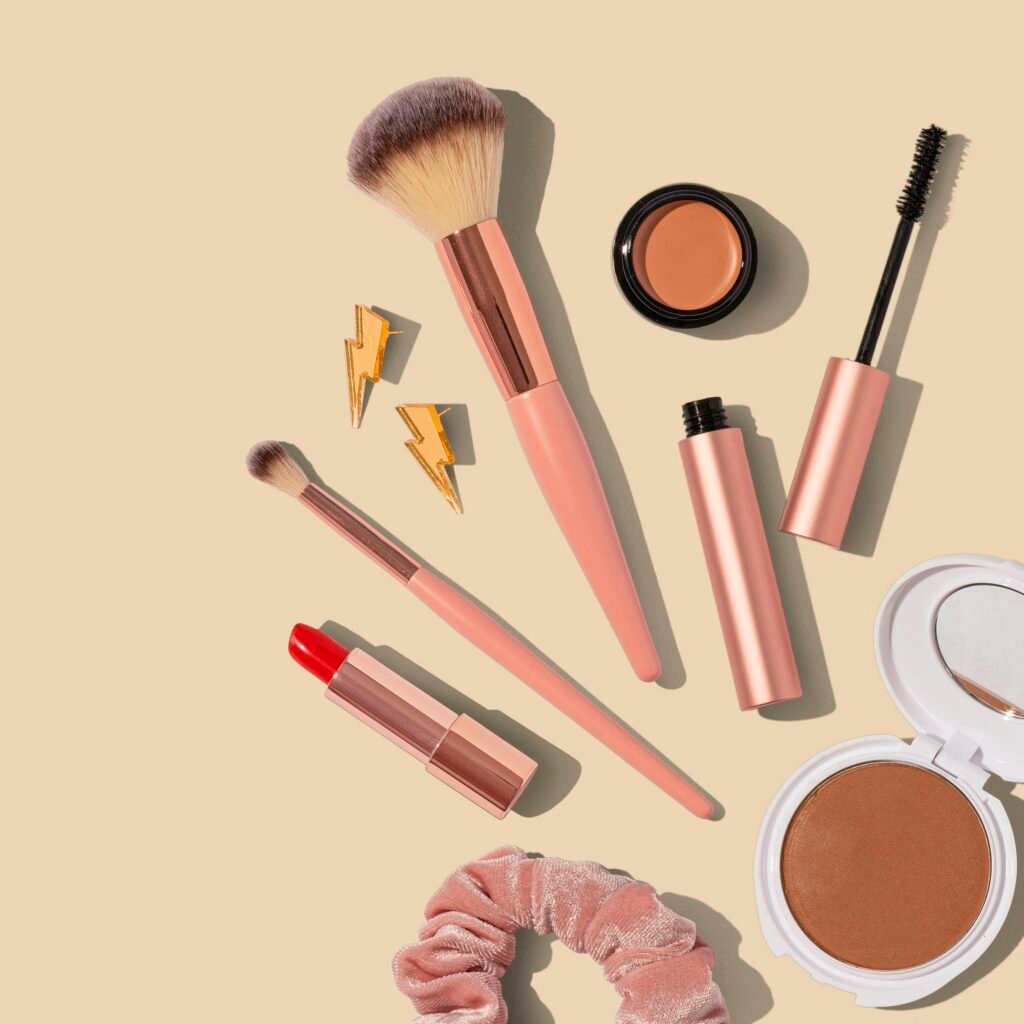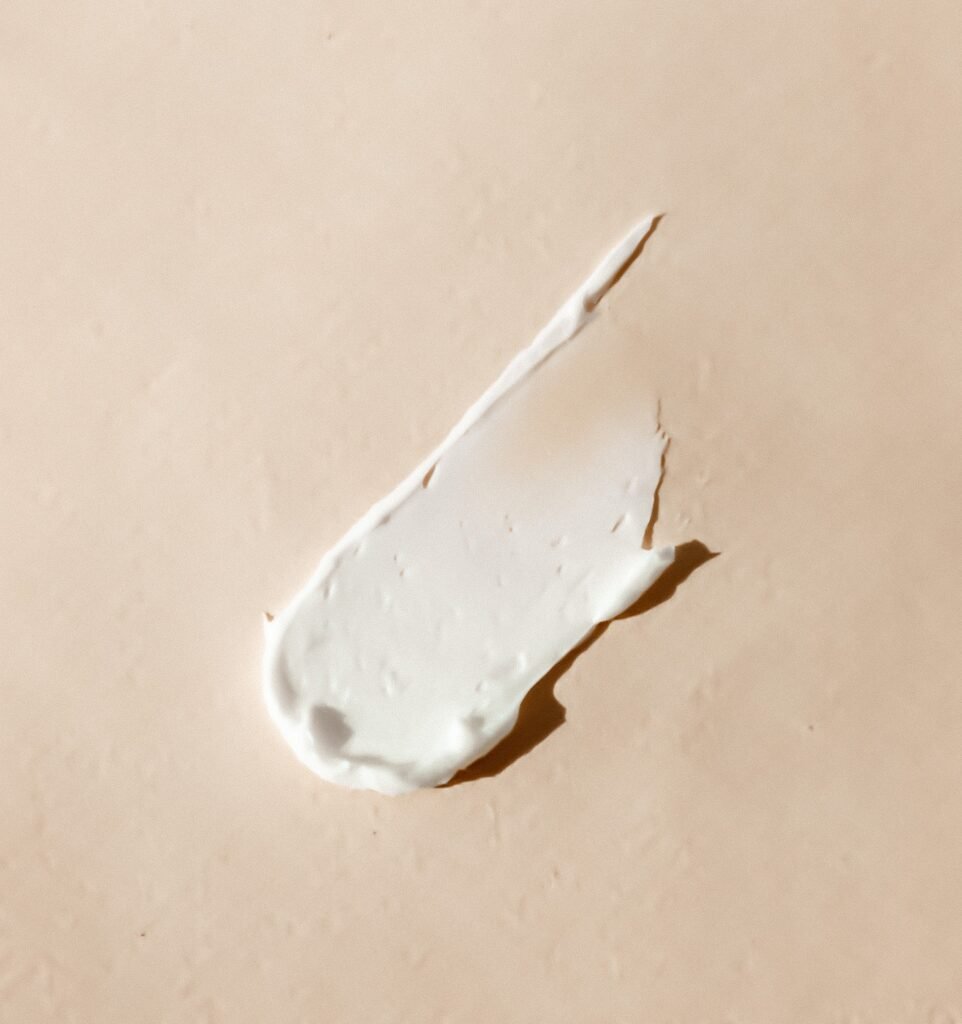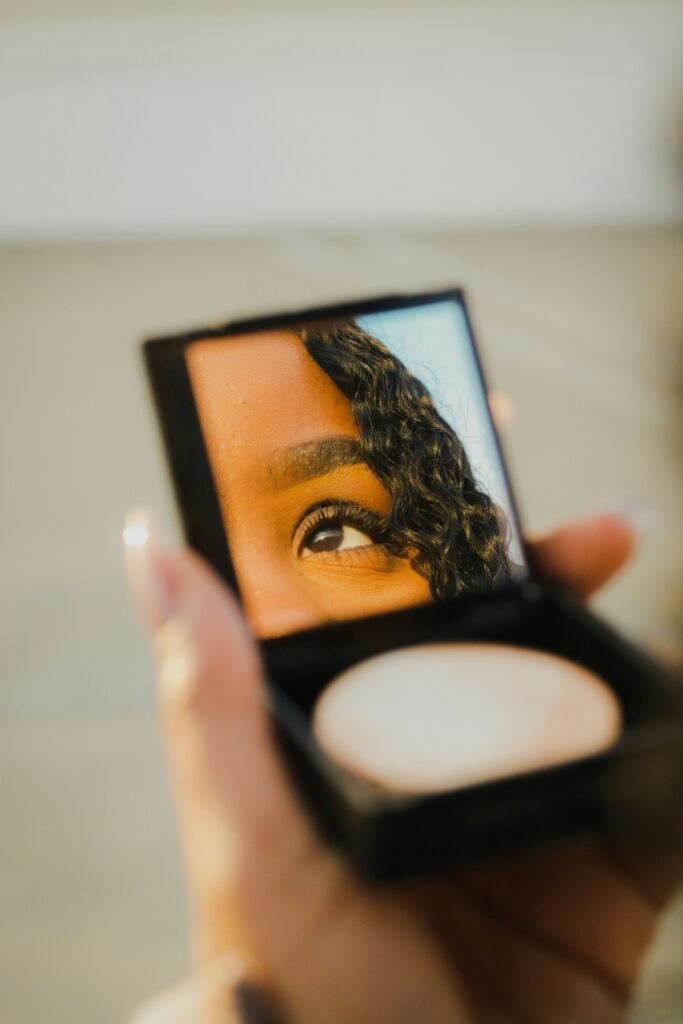Have you ever found yourself staring at the mirror, wondering how to get rid of those pesky dark circles and puffiness under your eyes? You’re not alone. Many of us struggle with this common beauty concern. Luckily, there are a few easy and effective ways to reduce dark circles and puffiness, giving you a refreshed and rejuvenated appearance. From simple lifestyle changes to tried-and-true remedies, we’ll explore the best options for achieving brighter, more vibrant eyes. Say goodbye to tired-looking peepers and hello to a refreshed and revitalized you!

Causes of Dark Circles and Puffiness
Genetics
One of the primary causes of dark circles and puffiness under the eyes is genetic predisposition. If your parents or close relatives have dark circles or puffy eyes, there is a higher chance that you may also have these concerns. Genetics play a significant role in the structure and thickness of the skin around the eyes, which can contribute to the appearance of dark circles and puffiness.
Lack of Sleep
Not getting enough sleep can lead to those dreaded dark circles and puffy eyes. When you don’t get sufficient rest, the blood vessels under your eyes can become more visible, giving the appearance of dark circles. Lack of sleep can also cause fluid retention, leading to puffy eyes. It’s essential to prioritize getting a good night’s sleep to prevent these issues.
Allergies
Allergies, such as hay fever or dust allergies, can trigger dark circles and puffiness under the eyes. When you are exposed to allergens, your body produces histamines, which can cause inflammation and fluid retention. This can result in swollen and discolored under-eye areas.
Aging
As we age, the skin naturally loses its elasticity and collagen, which can contribute to the appearance of dark circles and puffiness. The thinning of the skin around the eyes can make the blood vessels beneath more visible, leading to dark circles. Additionally, the loss of tissue support can cause the fat pads under the eyes to shift and accumulate, resulting in puffiness.
Dehydration
When you are dehydrated, your body tries to retain as much water as possible, leading to fluid retention and puffiness. drinking an adequate amount of water is crucial for maintaining good overall hydration, which can help reduce under-eye puffiness. Dehydration can also make the skin appear dull and contribute to the prominence of dark circles.
Home Remedies for Dark Circles and Puffiness
Cold Compresses
Using cold compresses can help reduce under-eye puffiness and soothe tired eyes. You can wrap ice cubes in a thin cloth or use chilled spoons to gently apply cold pressure to the area. Cold compresses have a constricting effect on blood vessels, reducing swelling and diminishing the appearance of puffiness.
Tea Bags
Tea bags, particularly those containing caffeine, can be used as a home remedy for dark circles and puffiness. After steeping tea bags in hot water, allow them to cool down, and place them on your closed eyelids for about 15 minutes. The caffeine in the tea can constrict blood vessels and reduce swelling, while the cool temperature can provide a soothing effect.
Cucumber Slices
Cucumber slices have long been used as a natural remedy for reducing under-eye puffiness. The cooling and hydrating properties of cucumbers can soothe the skin and alleviate puffiness. Simply place chilled cucumber slices over your closed eyes for 10-15 minutes to experience their refreshing effects.
Potato Slices
Similar to cucumber slices, potato slices can also help reduce under-eye puffiness. Potatoes contain enzymes and starches that have a natural anti-inflammatory effect. Slice a chilled raw potato and place the slices over your eyes, allowing them to sit for about 10 minutes. This home remedy can help alleviate puffiness and brighten the under-eye area.
Chilled Spoons
Cold spoons can be used as a quick fix for puffy eyes. Place several metal spoons in the refrigerator until they are chilled, then apply the rounded side of the spoons to your closed eyelids. The cold temperature can constrict blood vessels and reduce puffiness. Repeat the process with additional chilled spoons as needed.
Skincare Products for Dark Circles and Puffiness
Under Eye Creams
Under eye creams specifically formulated for dark circles and puffiness can be effective in reducing their appearance. Look for creams that contain ingredients like hyaluronic acid, caffeine, retinol, or vitamin C. These ingredients can help hydrate and tighten the skin, improve circulation, and reduce the darkness and puffiness of the under-eye area.
Retinol Products
Retinol, a derivative of vitamin A, is known for its anti-aging properties and ability to stimulate collagen production. Using retinol-based skincare products can help improve the thickness and elasticity of the skin around the eyes, reducing the visibility of dark circles and minimizing puffiness.
Vitamin C Serums
vitamin C serums are packed with antioxidants that can brighten the under-eye area and reduce puffiness. They help promote collagen production and improve skin elasticity, making the skin appear firmer and less prone to dark circles and puffiness. Incorporate a vitamin C serum into your skincare routine to target these concerns.
Eye Masks
Eye masks are a popular option for treating dark circles and puffiness. These masks come in various forms, such as sheet masks or gel patches, and are usually infused with ingredients like hyaluronic acid, peptides, and plant extracts. Eye masks provide a concentrated dose of nourishment and hydration to the under-eye area, reducing dark circles and puffiness.
Green Tea Extracts
Green tea extracts contain polyphenol compounds that have anti-inflammatory and antioxidant properties. Applying skincare products containing green tea extracts can help reduce puffiness and calm inflammation in the under-eye area. Look for eye creams or serums that include green tea as an active ingredient.
Lifestyle Changes to Reduce Dark Circles and Puffiness
Getting Sufficient Sleep
One of the most effective lifestyle changes to reduce dark circles and puffiness is ensuring you get enough sleep. Aim for 7-9 hours of quality sleep each night to allow your body time to repair and rejuvenate. Establishing a consistent sleep schedule and creating a relaxing bedtime routine can help improve the overall quality of your sleep.
Managing Allergies
If allergies contribute to your dark circles and puffiness, it’s important to manage your allergies effectively. Consult with a healthcare professional to identify your specific allergens and develop a plan to minimize exposure. This may include avoiding triggers, using allergy medications, or seeking allergy immunotherapy.
Drinking Enough Water
Proper hydration is essential for skin health and reducing under-eye puffiness. Make sure you drink an adequate amount of water throughout the day to keep your body hydrated. Staying hydrated can help flush out toxins, reduce water retention, and promote overall skin health.
Avoiding Excess Salt and Alcohol
Excessive consumption of salt and alcohol can contribute to fluid retention, leading to puffy eyes. limit your intake of salty foods and alcoholic beverages to prevent fluid buildup and minimize under-eye puffiness. Opt for a balanced diet with reduced sodium content and drink alcohol in moderation.
Quitting Smoking
Smoking not only poses serious health risks but can also worsen the appearance of dark circles and puffiness under the eyes. The chemicals in cigarettes can restrict blood flow and damage collagen and elastin, leading to thinner skin and increased visibility of blood vessels. Quitting smoking can significantly improve the overall health and appearance of your skin.

Makeup Techniques to Conceal Dark Circles
Color Correcting
Color correcting involves using specific shades of concealer or color correctors to neutralize the discoloration under the eyes. For dark circles, a peach or orange color corrector can counteract the bluish or purple tones. Apply the color corrector to the areas of concern before applying concealer or foundation for a more even skin tone.
Using Concealer
Concealer is an essential tool in masking dark circles. Choose a concealer that matches your skin tone or is one shade lighter. Apply it in a triangular shape under the eyes, blending it gently with a brush or fingertips. Make sure to choose a creamy, lightweight formula that provides sufficient coverage without settling into fine lines.
Applying Foundation
Foundation can help create an overall even complexion, including the under-eye area. Select a foundation that matches your skin tone and offers medium to full coverage. Dab a small amount of foundation on the areas of concern, blending it gently with a sponge or brush. Avoid applying too much product to prevent a heavy and cakey appearance.
Baking Technique
The baking technique involves applying a thick layer of loose translucent powder to the under-eye area and allowing it to set for a few minutes before dusting off the excess. This technique helps to set the concealer and prevent creasing or smudging throughout the day. Use a fluffy brush to apply the powder and gently dust it off after a few minutes.
Illuminating Powders
Using illuminating powders can help brighten the under-eye area and create a natural glow. Look for powders with light-reflecting properties and subtle shimmer. Apply a small amount of illuminating powder to the inner corners of your eyes and along the brow bone to highlight and give a fresh, awake appearance.
Medical Treatments for Dark Circles and Puffiness
Chemical Peels
Chemical peels involve the application of a chemical solution to the skin, which exfoliates the outer layer and stimulates collagen production. This treatment can help improve the texture and appearance of the skin, reducing the prominence of dark circles and puffiness. Consult a dermatologist to determine if chemical peels are suitable for your specific concerns.
Intense Pulsed Light (IPL) Therapy
IPL therapy uses intense pulses of light to target and break down areas of pigmentation or blood vessels beneath the skin. This treatment can effectively minimize dark circles and reduce the visibility of blood vessels, resulting in a brighter and more even under-eye area. Professionals trained in IPL therapy can determine the most suitable settings for your individual needs.
Dermal Fillers
Dermal fillers, typically made of hyaluronic acid, are injected into the under-eye area to fill hollows and improve volume. This treatment can help reduce the appearance of dark circles and puffiness by adding support and smoothing the area. Consult with a qualified medical professional to discuss the potential benefits and risks of dermal fillers.
Laser Resurfacing
Laser resurfacing involves using laser technology to remove damaged skin layers and stimulate collagen production. This treatment can help improve the texture, tone, and elasticity of the skin around the eyes, reducing the visibility of dark circles and puffiness. Seek professional advice from a dermatologist or plastic surgeon to determine if laser resurfacing is appropriate for you.
Surgical Procedures
In severe cases, surgical procedures may be recommended to address persistent dark circles and puffiness. Blepharoplasty, also known as eyelid surgery, can tighten and reshape the upper and lower eyelids, reducing sagging and puffiness. This invasive procedure should be considered as a last resort and thoroughly discussed with a qualified surgeon.

Professional Treatments for Dark Circles and Puffiness
Microcurrent Therapy
Microcurrent therapy uses low-level electrical currents to stimulate the muscles and improve circulation in the under-eye area. This treatment can help reduce puffiness and tighten the skin, resulting in a more youthful appearance. Licensed estheticians or dermatologists can provide microcurrent therapy services.
Radiofrequency Treatment
Radiofrequency treatment utilizes radio waves to heat deep layers of the skin, stimulating collagen production and tightening the tissue. This non-invasive procedure can help reduce dark circles and puffiness by improving skin elasticity. Consult with a certified professional to determine if radiofrequency treatment is suitable for your specific concerns.
Intense Pulsed Light (IPL) Therapy
As mentioned earlier, IPL therapy can also be performed by professionals to effectively treat dark circles and puffiness. By targeting pigmentation and blood vessels, IPL therapy can help achieve a brighter and more rejuvenated under-eye area. Seek out qualified practitioners who specialize in IPL therapy for optimal results.
Surgical Procedures
Certain surgical procedures, such as lower eyelid blepharoplasty, orbital fat repositioning, or transconjunctival fat removal, may be recommended for individuals with severe dark circles and puffiness. These procedures involve manipulating the underlying structures to achieve a more refreshed appearance. It is essential to consult with a skilled surgeon who specializes in cosmetic eye surgery.
Platelet-Rich Plasma (PRP) Therapy
Platelet-rich plasma (PRP) therapy involves drawing a small amount of the patient’s blood, processing it to concentrate platelets, and injecting it into the under-eye area. PRP contains growth factors that can stimulate collagen production and improve skin texture and thickness. This treatment can help reduce dark circles and puffiness while promoting natural healing and rejuvenation.
Preventing Dark Circles and Puffiness
Sun Protection
Protecting your under-eye area from the sun’s harmful rays is crucial in preventing dark circles and puffiness. Apply sunscreen or wear sunglasses with UV protection to shield your delicate under-eye skin. Sunscreen can help prevent collagen breakdown and melanin production, keeping your skin youthful and minimizing discoloration.
Good Sleep Hygiene
Establishing good sleep hygiene practices can go a long way in preventing dark circles and puffiness. Create a sleep-friendly environment by keeping your bedroom dark, cool, and quiet. Develop a consistent bedtime routine that promotes relaxation, such as reading a book or practicing a mindfulness activity. By prioritizing quality sleep, you can reduce the likelihood of developing under-eye concerns.
Eye Exercises
Performing eye exercises regularly can help improve blood circulation and strengthen the muscles around the eyes. Simple exercises such as eye rolling, blinking, and focusing on distant objects can promote eye health and minimize the appearance of dark circles and puffiness. Consult with an eye specialist or optometrist for specific exercises that may benefit your eye condition.
Balanced Diet
Maintaining a balanced diet rich in vitamins, minerals, and antioxidants is crucial for preventing dark circles and puffiness. Include foods like berries, leafy greens, nuts, and fish in your diet, as they contain essential nutrients for skin health. A healthy diet can improve blood circulation, reduce inflammation, and nourish your under-eye skin from within.
Regular Hydration
Staying hydrated is essential not just for overall health but also for preventing dark circles and puffiness. Drink an adequate amount of water throughout the day to keep your body hydrated and maintain proper fluid balance. Hydration helps prevent water retention and contributes to healthy skin, reducing the appearance of under-eye concerns.
When to Seek Medical Advice
Persistent Dark Circles
If you have tried various remedies and lifestyle changes but still experience persistent dark circles, it may be time to seek medical advice. A dermatologist or a healthcare provider can evaluate your condition, rule out any underlying causes, and provide appropriate treatment options.
Severe Puffiness
If you have severe and persistent under-eye puffiness that significantly affects your daily life or self-esteem, it is advisable to consult with a medical professional. They can evaluate your specific concerns and determine the best course of action, which may include medical treatments or surgical procedures.
Underlying Health Conditions
Sometimes, dark circles and puffiness can be symptoms of underlying health conditions. If you notice additional symptoms, such as fatigue, weight loss, or changes in your vision, it is essential to seek medical advice for a comprehensive evaluation. Identifying and treating the underlying cause is crucial for managing your specific concerns.
Changes in Vision
If you experience changes in vision along with dark circles and puffiness, it is crucial to seek prompt medical attention. Vision changes may indicate an eye infection, eye strain, or other eye conditions that require professional evaluation and treatment.
Pain or Discomfort
If you have severe pain, discomfort, or any unusual sensations in the under-eye area, it is recommended to consult a healthcare professional. Persistent pain or discomfort may be a sign of an infection, inflammation, or other underlying issues that require medical intervention.
Conclusion
Dark circles and puffiness under the eyes can be distressing, but fortunately, there are numerous remedies, lifestyle changes, and professional treatments available to address these concerns. By understanding the causes and utilizing the appropriate methods, you can reduce the appearance of dark circles and puffiness, revealing a brighter, revitalized under-eye area. Remember to seek medical advice if your concerns persist or if you experience any accompanying symptoms to ensure proper diagnosis and appropriate treatment. With patience and a comprehensive approach, you can achieve a more refreshed and rejuvenated appearance.

